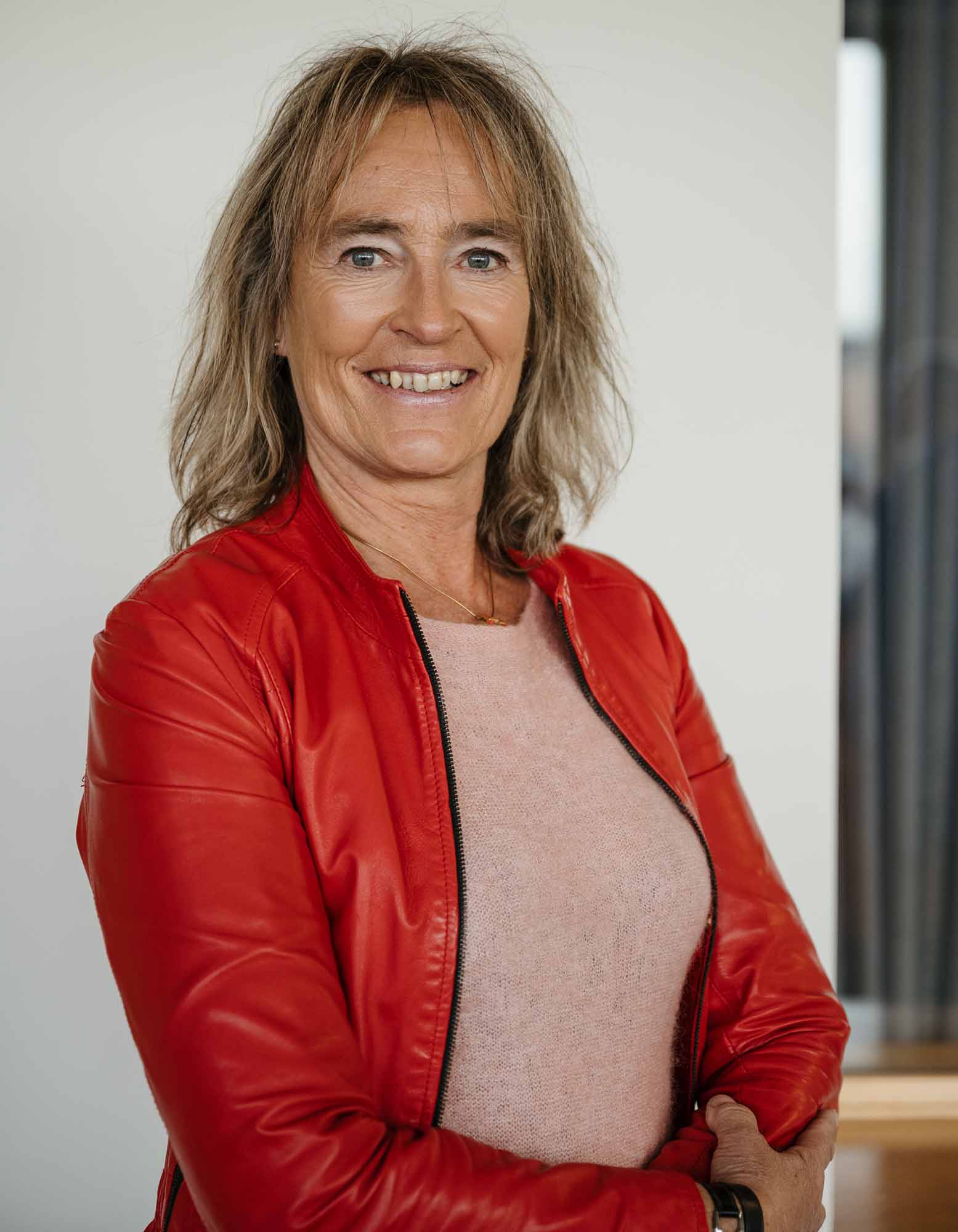
In this episode of WTiN’s Textile Innovation Podcast we speak with Helene Behrenfedlt, senior industry strategy director fashion at Infor.
Infor is a cloud software provider, which has been built specifically for industries like manufacturing. The company creates easy-to-use, comprehensive solutions that help manufacturers operate more smoothly and intelligently.
Behrenfedlt focuses on the fashion and footwear industries, she speaks about the benefits of using cloud software and how fashion, textiles and footwear can effectively use data to support their manufacturing goals.
We also talk about the growing need for brands and manufacturers to implement automation and artificial intelligence (AI) solutions into their supply chains. Behrenfedlt speaks about Infor is using these resources optimally to improve its offering.
For more information, please visit infor.com.
You can listen to the episode above, or via Spotify and Apple Podcasts. To discuss any of our topics, get in touch by following and connecting with WTiN in LinkedIn, or email aturner@wtin.com directly. To explore sponsorship opportunities, please email sales@wtin.com.
Have your say. Join the conversation and follow us on LinkedIn
-
Transcript
This transcription has been AI generated and therefore may have some inaccuracies.
Ep. 133: Cloud software to optimise supply chains
In this episode of WTiN’s Textile Innovation Podcast we speak with Helene Behrenfedlt, senior industry strategy director fashion at Infor.
WTiN: Hello and welcome to Textile Innovation, hosted by WTiN. My name is Abi and I'm the Features Editor and your podcast host. Each month we will be joined by a special guest. So join me and my colleagues as we deep dive into what's new, what's interesting and what unmissable innovations have hit the market recently.
We cover everything on the podcast from sustainability to startups and the latest research and development. Plus we quiz the experts in the fields about their products and ideas across the huge spectrum that is the textile industry. So no matter what your interest is WTiN have you covered and we can connect you to everything you need to know right here from our central hub in the UK.
Today we are joined on the podcast by Helene Behrenfeldt, Senior Industry strategy director Fashion Infor. Infor is a global provider of cloud software built specifically for industries such as textile and fashion. In this episode Helene speaks about the benefits of using cloud software and how industries can effectively use data to support their manufacturing goals.
Hi Helene, thank you so much for joining me on WTIN's textile innovation podcast. We're so pleased to have you. Please could you tell me more about Infor and the work creating business cloud software products you provide?
Behrenfeldt: Yes, for sure. Infor is a global software company and we offer cloud solutions for certain key industries. The aim is quite clear, you know, We want to deliver as much specific capabilities as possible in the core. So what we also do is we bundle the offering together by an industry. So we call it a cloud suite, and that consists of several applications. The customer can really pick and choose what they need. So, for example, ERP, PLM, WMS, different kinds of applications. So this is really what we mean, what we offer is the complete suite by an industry in the Cloud.
WTiN: Amazing. Can you tell me how you work within the fashion and textile industry in particular?
Behrenfeldt: Definitely. We look at fashion and textile. It's actually a global supply chain, all the way from the cotton, textile, the finished goods manufacturing, through the brands and out to the retail. So it's kind of a broad perspective. But we work with the industry, I would say, in two different ways. We work closely with customers, of course, because they live in the industry every day. So these customers are in apparel, footwear, textile sector. So we get input from the customers and they actually help us to set the strategic direction where we should be going. And as an example, we run a council with customers twice a year. So we collect valuable feedback from them. So the second thing I would say is that we pay attention of course to what happens on the market. So we need to be prepared for what's coming and we do this by participating in different events, working I would say with influencers, key influencers on the market and all of that about would actually become input to our development team.
WTiN: And can you go into more detail regarding building complete source application suites that are specifically designed to meet the needs of apparel, footwear and textile companies?
Behrenfeldt: Happy to. The key point here I would point out first is the suite. As mentioned earlier, we offer several applications, but they are really dedicated for this particular industry that we are talking about. They sit on the same technology platform, and that's what we call a suite. Really what it means for an end-user, there would be one single touch point and having access to relevant data for their role from one single place. The customers that we have, they have the flexibility to maybe start with one application like ERP and then expand into other areas later on. That's how we work with that. Infor are there really to ensure that the applications in the suite are working together. It's pre-built with integrations, so they are smoothly working together on that technology platform.
Another key point to point out is that it's designed for the industry, as mentioned earlier, is the relevant capabilities for apparel, footwear and textile and we want to have it in the core. And that means you don't have to build something on top of the core to make it work for your industry. So really we need to go down on what we call micro vertical level. So looking at apparel because it's not the same as textiles or footwear.
WTiN: Thank you and delving a bit deeper into that, can you tell me more about Infor’s enterprise resource planning system and how that works within these sectors?
Behrenfeldt: Yeah the ERP it's a word most people are familiar with. It's kind of what I would call it, it's a transaction engine if you look at it, to manage your typical processes, whether it's being, you know, planning, manufacturing, procurement, sales, etc. And we do that specifically, again, for the apparel, footwear and textile sector. So our suite, the enterprise resource planning sits in the middle of that suite. It's a core offering, the ERP, sits in the middle of that suite of applications. That same ERP is capable of serving brands, as well as manufacturers and retailers, all in one solution, and they can do that with the same ERP. Scenario, if I take an example for a brand, if you're a brand owner, you might be designing collections, sourcing it from outsource production. You have to fulfill orders from multiple sales channels and keep control of your inventory levels. It's the same for manufacturers in a way, but they also need to be very much in control of raw materials planning, capacity control, production execution reporting. So we add on that layer depending on who you are in the value chain.
Since our ERP is sold to other industries than apparel, footwear and textiles, we can actually use capabilities from those industries. So I have two examples. So equipment, for example, it's quite different, but they do have repair, rental, and they go down to what we call a serialized item level. And this is something we see an increased need for in apparel and footwear and textile with the upcoming digital product passports requirement. And the second scenario here would be food and beverage. So if you think about textiles, it's a little bit similar in a way to food because they need lot control, shelf life, if you have chemical treatment products with the end of life date, and quality inspection and certification. So really that is in a nutshell what the ERP for us means.
WTiN: That's great. I really like the description of it as a transaction engine. I think that's great. And just looking about what you've previously discussed about what Infor uses in terms of the source systems and the enterprise resource planning system. Can you tell me how you have helped textile and apparel companies? Do you have any particular case studies that you might be able to share with us today?
Behrenfeldt: Definitely, of course we have several case studies and we serve multiple companies across the supply chain but as an example we can take an intimate apparel brand. They are specifically located in France but obviously a global brand and they were looking to optimize their operations. Pretty much everybody wants to do that. And this company is called PMC Lingerie. They are French designer, manufacturer, but also distributor. So they serve quite a lot of that value chain. And they do it in underwear and nightwear. And they decided to select our WMS, as we call warehouse management system, and that was going to be used at the foundation of its new Cloud-first warehousing operations that they were building out. They are distributing four brands on the market. It's quite high volumes. Warehouse management operation is key to get the products out. So this solution will really enable this company, P&C Lindurie, to reduce costs. I think it's across the line of business, and they do that by getting more accurate real-time insights into inventory levels in this case. Our WMS, we hope, will eliminate the risk of overstocking and other problems you might have in the warehouse. We aim to help them with a much better situation when it comes to the warehousing. They don't want maybe to go out and buy extensive expensive third-party storage, so they can instead manage their own operation with our solution. This deployment of the new platform is being overseen by a partner of ours, LTTD Consulting. It's an integration partner, so we are working closely together with them.
WTiN: What a fantastic solution for them. And looking a bit more widely at the sector, what skills gap have you identified in regard to automation and artificial intelligence?
Behrenfeldt: That's an interesting topic because I think no one will debate automation is really key. We heard on the story I just told they want to make it more efficient, you know, the warehouse operation. So automation has more or less always been there and AI is an additional layer to that. And looking at automation, while it reduces repetitive and manual tasks, I would say still that the true business success depends on people. Because really you need people who can interpret and act on the insights that the AI or automation engine will bring to you. So technologies such as automation and AI, they are constantly evolving and they are changing. And also the jobs we see in the sector, what it looks like will change with the evolvement of the automation and AI. Many companies today we see are struggling and they are struggling to find staff or people that understands these new digital tools. You know, it's about demand forecasting, algorithms, robotic process automation. It requires a certain skillset. And this is really becoming a gap on the market that we try to close. So leaders in the sector are looking at how they can supplement this traditional training approaches with initiatives like partnering. They partner with local education providers, creating academies, really the whole point is for upskilling existing staff or rotating workers across the different departments. So really building a broader knowledge of the systems.
WTiN: I love that and just coming off that, do you think that companies may risk falling behind if they don't invest in the system, say that you're offering, or in upskilling their workers like you just said. And just kind of coming off that again, quite a big question, but what opportunities do you see in this area moving forward?
Behrenfeldt: Definitely there might be a risk for sure because these things are moving really fast. So I would say companies that fail to embrace the cloud or AI automation, they risk being locked into these rigid supply chains and the competitors may be at gaining speed and other areas they are much more ahead of companies who hasn't even started yet. And our research shows the culture and the mindset matters just as much as technology. So with a 16% productivity gap between fashion and textile business that embrace technology and those that don't.
So there is actually a mix here on the market. And I think the opportunity is really in creating smart and more flexible supply chains and those things can anticipate demand or other disruptions on the supply chain before they hit you as a company. And it can also help you move into new models or business models like rental, repair, resell and even on-demand customization of products specifically for a certain customer needs. So the future workforce, as I see it, will be data-led. I think data is the key here. You would not have any automation, AI, or any smart supply chains without having control of your data. So I think that is really the opportunities we see going forward. Right skills driving this type of transformation. You have to have a journey map, where do you want to go with realistic goals and really you need to have control of your data. That is key I think for going forward.
WTiN: And likewise with rising costs and increasing traceable supply chain challenges, how could tools such as AI and cloud, like you've just explained, work towards helping companies navigate those challenges?
Behrenfeldt: Yeah I think, I mean cloud, data and AI are really the enablers that you need to quickly act if something happens, such as managing disruptions and stay ahead. And we know sustainability, environmental things are coming. And really cloud, I think cloud for me, it's about collaboration. So on the cloud platform, you can collaborate with actors in the supply chain. You can improve traceability. You can manage the global supply chain better, meet and also meeting these compliance and regulations that are coming. So overall better collaboration if you are on the cloud. The second thing is that data element, and we call it real-time data sharing, will help you plan much better, reduce waste most likely, and helping companies respond more quickly. If it's spikes in costs or shortages in supply or other things. The third thing that we mentioned earlier is AI. And really AI and automation and predictive modelling will help companies take the next step and around the demand, supply, inventory. I think it will be essential going forward for this sector apparel, footwear and textile.
WTiN: My final question is moving forward in your opinion, I feel that you've touched upon it already, but how integral is technology to textile supply chain and efficiencies? And what would you encourage companies to invest in and train in moving forward?
Behrenfeldt: Yeah, of course, technology is key. And as mentioned before, not just technology, but the people to run it. We actually see quite many companies still on legacy systems. What we mean legacy is not cloud, it's older platforms. So I think going forward, in my opinion, technology in the cloud, in modern technology, help you become more innovative, whether it's innovative in textiles or in something else. But it only works if people can trust it and use it. So it's a combination of having the right technology and the right skill sets, training people to be able to drive this, we call it transformation projects, whatever you are going into. So the winning formula, I think, is automation paired with skilled data, comfortable workers that can really work on the data, understand the data, and look at the insights to be more proactive. When this is done right, it becomes the backbone of that efficiency that you are looking for. If you're not moving in this direction, you are risk being behind because other ones are already moving.
Having the right data in place, training your people, the modern tools we talked about, being on the cloud to collaborate better will be key, of course. That's all around technology and people. And I think also taking the next step, when you have the foundation in place, the next step is to go into this AI automation and all the brilliant things that you can do across your supply chain. But it's no small feat. It will require investment, people and as we call it a journey map, where do you want to go? And that is the key advice. Start looking at this rather sooner than later later because other ones are already moving and this is moving fast at the moment.
WTiN: Thank you so much. Thank you for joining me on the WTiN's Textile Innovation Podcast. It's going to be really exciting to see what happens in the cloud space moving forward.
Behrenfeldt: Thank you.
WTiN: Thank you so much for listening. If you have any questions or want to learn more, you can follow us on LinkedIn at World Textile Information Network or you can contact me directly at content at WTiN.com. If you are interested in sponsoring an episode of the directly at content at WTiN.com. If you are interested in sponsoring an episode of the podcast, please email sales at WTIN.com. Thank you and we'll see you next time.



